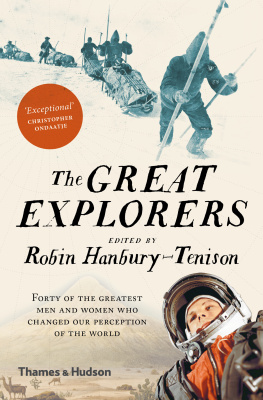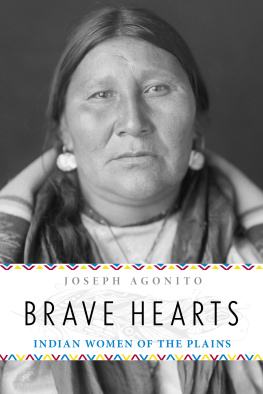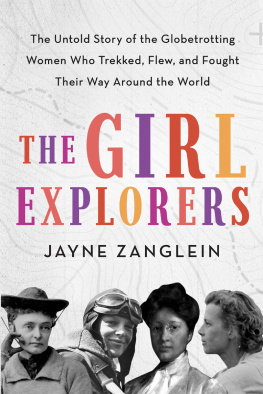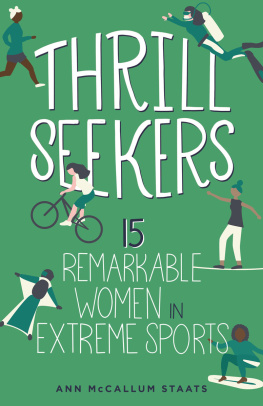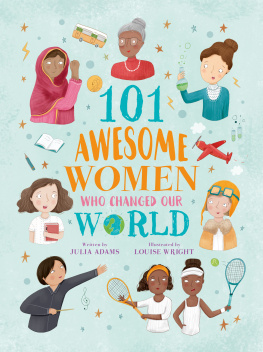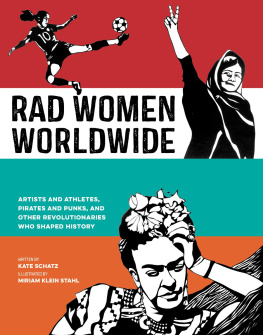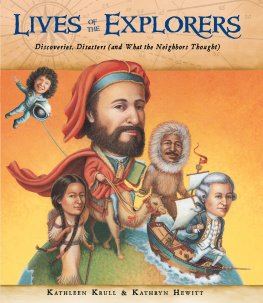
To the two Stephanies in my life: Stephanie L.,
who loves to explore new ideas, and Stephanie M.,
who never shies from challenges or adventures
J.C.
To Natty of the Northern Kingdom
C.H.
DIAL BOOKS FOR YOUNG READERS
A division of Penguin Young Readers Group
Published by the Penguin Group Penguin Group (USA) Inc., 375 Hudson Street, New York, NY 10014, U.S.A. Penguin Group (Canada), 90 Eglinton Avenue East, Suite 700, Toronto, Ontario, Canada M4P 2Y3 (a division of Pearson Penguin Canada Inc.) Penguin Books Ltd, 80 Strand, London WC2R 0RL, England Penguin Ireland, 25 St. Stephens Green, Dublin 2, Ireland (a division of Penguin Books Ltd) Penguin Group (Australia), 250 Camberwell Road, Camberwell, Victoria 3124, Australia (a division of Pearson Australia Group Pty Ltd) Penguin Books India Pvt Ltd, 11 Community Centre, Panchsheel Park, New Delhi - 110 017, India Penguin Group (NZ), 67 Apollo Drive, Rosedale, Auckland 0632, New Zealand (a division of Pearson New Zealand Ltd) Penguin Books (South Africa) (Pty) Ltd, 24 Sturdee Avenue, Rosebank, Johannesburg 2196, South Africa Penguin Books Ltd, Registered Offices: 80 Strand, London WC2R 0RL, England
Text copyright 2012 by J ULIE C UMMINS
Illustrations copyright 2012 by C HERYL H ARNESS
All rights reserved.
The publisher does not have any control over and does not assume
any responsibility for author or third-party websites or their content
Text set in Mrs Eaves
Printed in the U.S.A.
1 3 5 7 9 10 8 6 4 2
Library of Congress Cataloging-in-Publication Data
Cummins, Julie.
Women explorers: perils, pistols, and petticoats / Julie Cummins ; illustrated by Cheryl Harness.
p. cm.
EISBN: 9781101575642
1. Women explorersBiographyJuvenile literature. I. Harness, Cheryl, ill. II. Title.
G200.C85 2012
910.9252dc23
2011021627
INTRODUCTION
C LOSE YOUR EYES and name the first explorer that comes to mind. You probably said Christopher Columbus, or Henry Hudson, or even Vasco da Gama. Chances are highly unlikely that you named a woman. Yet there were many women who braved the dangers of jungles, glaciers, headhunters, cannibals, giant spiders, crocodiles, raging waterfalls, disease, extreme weather, and primitive conditions. Some journeyed alone with little more than a string hammock, while others traveled in lavish style with silver, china, and servants.
Why havent we heard their names? The answer is: Its a sign of their times. The daring men who ventured into the great unknown are celebrated, but the many intrepid and brave women who faced the same kinds of challenges were saddled with gender barriers, societal disapproval, and second-class status: Females belonged at home!
The following ten women were born before 1900, at a time when proper ladies simply did not go gallivanting around the world to explore new territories or undiscovered places. Full-length dresses, hats, and gloves were the approved attire, not split skirts for riding camels or donkeys, or trousers for climbing mountains. Heaven forbid that a proper lady would use her parasol to fend off an attacking crocodile by ramming it down the crocodiles throat!
The daring-do of these dauntless women resulted in contributions to science, geography, history, and cultural understanding. They played an integral role in the history of exploration by organizing and financing expeditions, leading voyages themselves, and writing literary records of their adventures. They captured the wonders they saw on film, in photographs, and in diaries and books. They have been overlooked for far too long. So sally forth and meet these daring dames.


LOUISE ARNER BOYD
From Parties to Polar Bears
I TS A LONG WAY from the wealthy, privileged life of a debutante in San Francisco to an explorers life in the Arctic. Yet Louise Boyd journeyed back and forth between those two worldsmany times.
Her familys affluence provided Louise with governesses, private schools, rifle shooting lessons, and horse riding. The one thing the Boyds money couldnt buy was good health: Both of Louises brothers died in their teens and by 1920 her father and mother had both died as well, leaving Louise all alone at age thirty-twowith three million dollars, a mansion, and control of the family investment business.
Running an investment firm was not her dream; Louise loved poring over geography books and wanted to travel. Her first trip was by chauffeured motorcar through France and Belgium, but she longed to visit less traveled parts. Louise found the love of her life on her next trip. Sailing on a Norwegian tourist boat, she glimpsed the Arctic regions for the first time, marveling that Far north, hidden behind grim barriers of pack ice, are lands that hold one spellbound . the awesome immensity of lonely mountains, fiords, and glaciers.

Her fascination with the icebound world resulted in seven expeditions to the Arctic that she planned, led, and financed. The novelty of her first journey to a cluster of isolated islands in the Arctic Ocean made local headlines: San Francisco Woman in Arctic . to hunt polar bears, seals, and other Arctic animals. And she did: Louise shot three seals and eleven polar bears, including one that charged her at forty feet.
On her second expedition, Louise changed course when she heard that her hero, Roald Amundsen, was missing. Roald was a famous Norwegian explorer who had been the first person to reach the South Pole. Now hed disappeared while leading an aerial rescue mission to the North Pole to search for the crew of a downed Italian blimp. Louise joined the massive search of the Arctic seas that lasted three months and covered ten thousand miles.
The world held its breath as people waited for daily press bulletins. Several of the missing Italians were eventually discovered alive, but sadly, Roald Amundsen himself was never found.

Louise decided that she would collect scientific data of this unknown region on her future voyages, and the American Geographical Society financially supported her geographic research. She spared no expense, outfitting her ship with a library, a darkroom for her photographic gear, a room for her maid, and one for the latest scientific equipment, including an echo-sounding machine that measured the depth of the sea. She was among the first to use this tool.

Louise was an expert photographer, and the detailed maps made from her pictures played a role in World War II. The U.S. government hired her as a consultant but delayed the publication of her book on hydrographic studies in 193738 because the military didnt want the previously uncharted information to fall into the hands of German enemies.
Transporting her camera equipment across icebergs was a slippery slope. The craggy terrain was hazardous, and the wildlife was equally dangerous. When she was photographing, Louise had to be on constant guard for attacks by rogue musk ox. In herds they avoided people, but a lone bull could charge at full speed. Luckily, their rank odor wasnt the only thing the musk oxen left behind. They also rubbed their wool off on the bushes and boulders, and Louise collected this bounty to make sweaters and mufflers.
Next page

